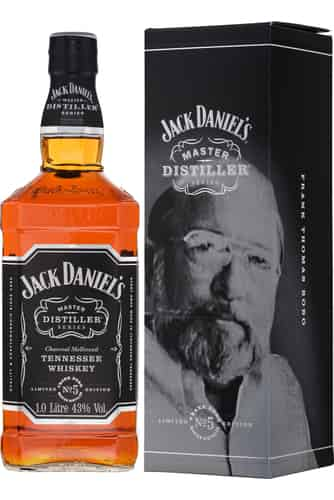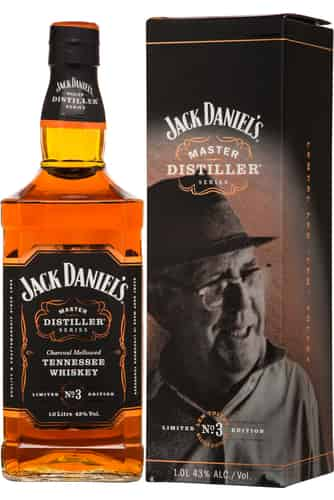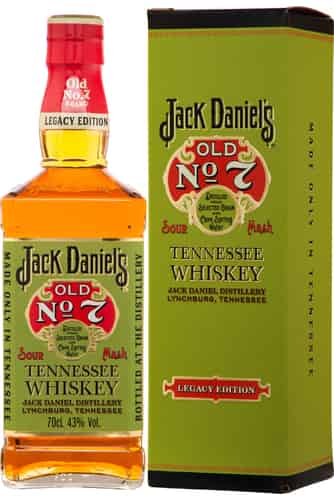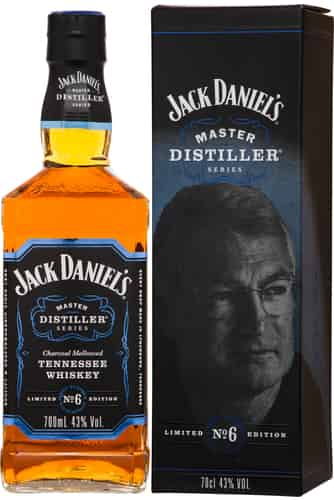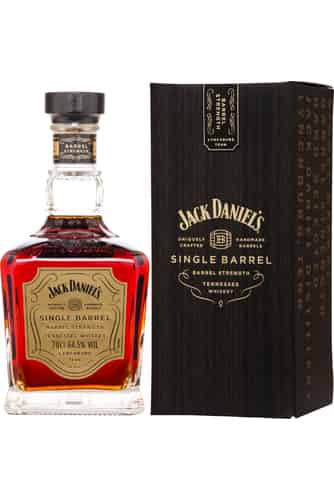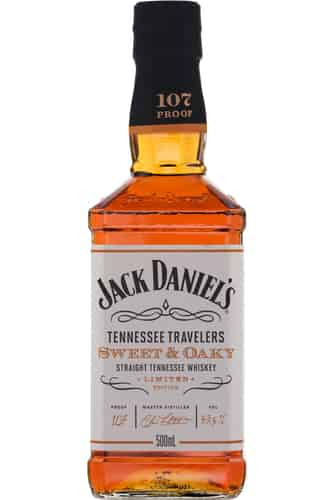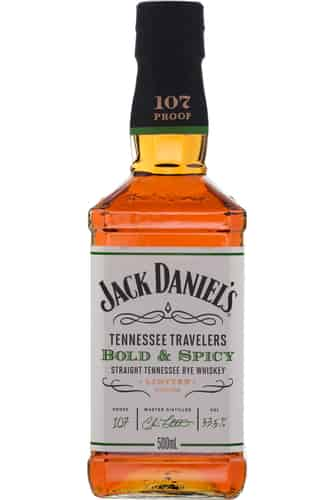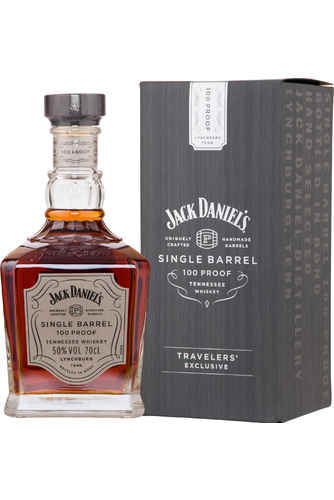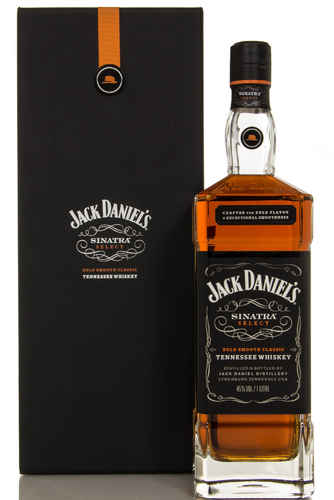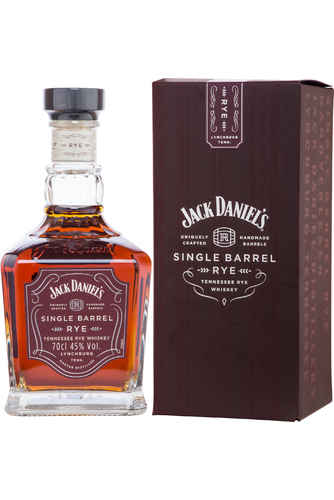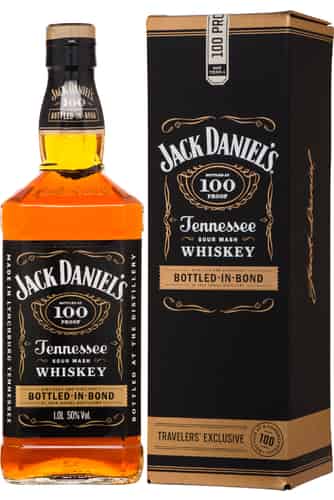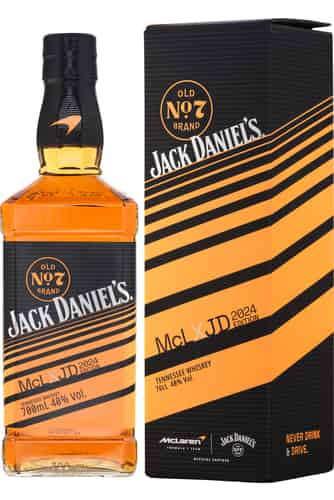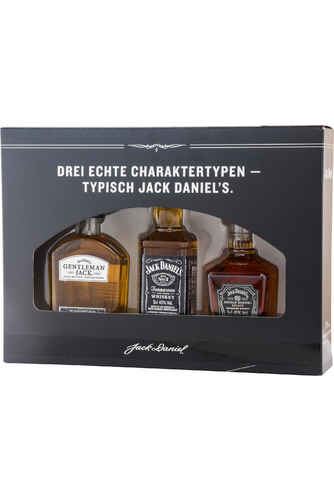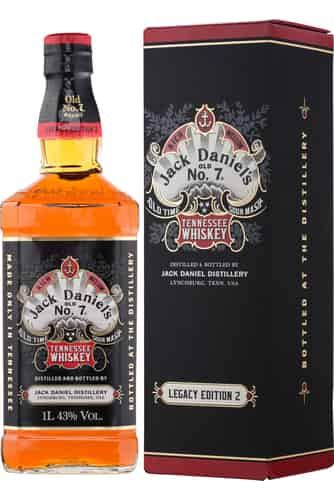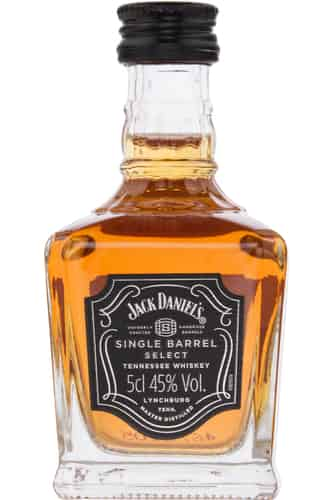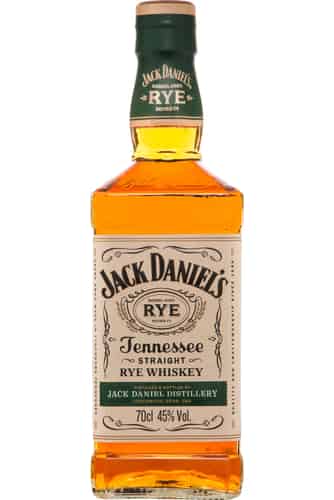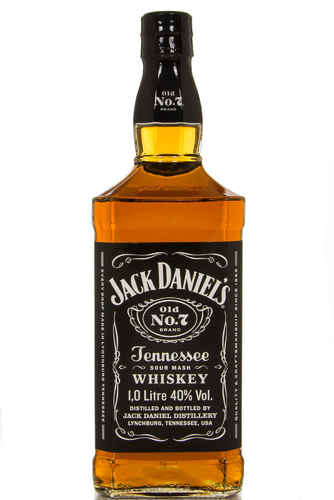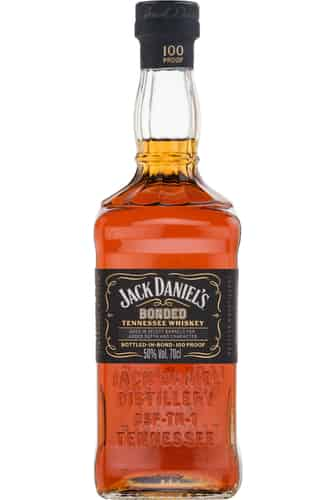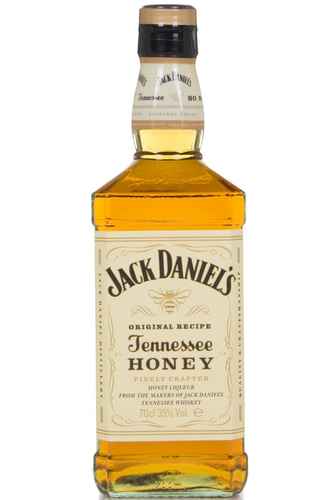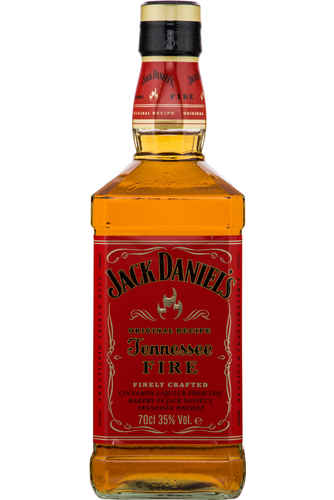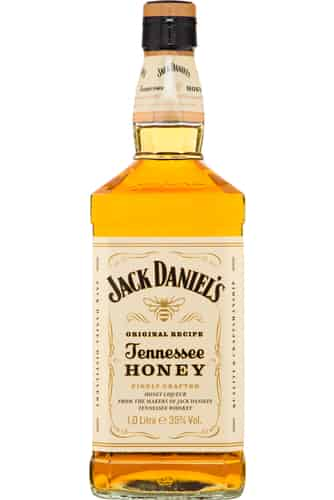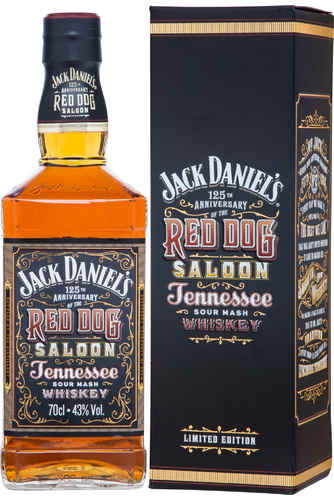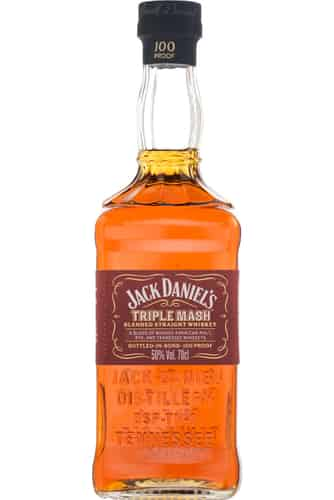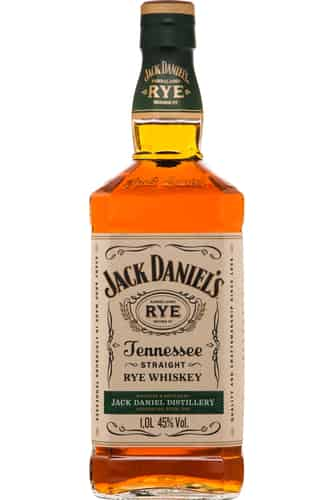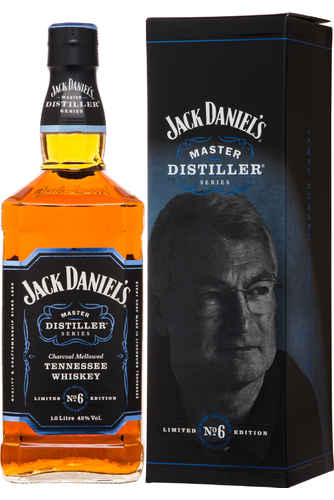 United States - DHL 15.00 € + 7.70 € /kg
United States - DHL 15.00 € + 7.70 € /kg
Jack Daniel's
- Save
4.00 €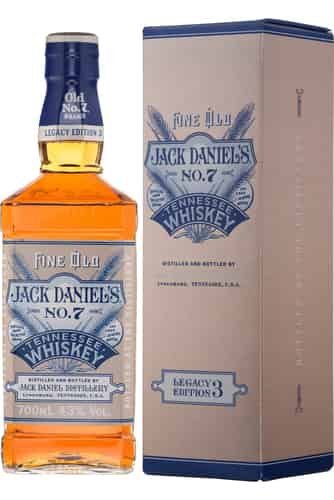
Jack Daniel's Old No. 7 Legacy Edition 3
70 cl, 43%In stock28.80 €32.80 € 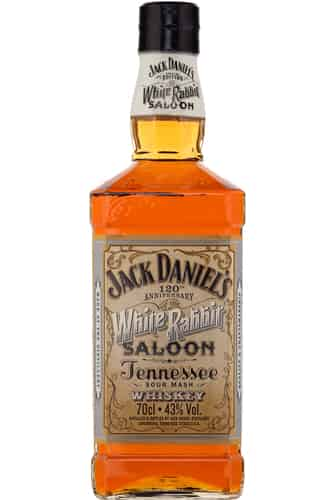
Jack Daniel's White Rabbit Saloon
70 cl, 43%In stock39.20 €- Save
6.40 €![]()
Jack Daniel's Master Distiller No. 5 (1 Liter)
100 cl, 43%In stock39.20 €45.60 € - Save
6.40 €![]()
Jack Daniel's Master Distiller No. 3 (1 Liter)
100 cl, 43%In stock39.20 €45.60 € - Save
4.00 €![]()
Jack Daniel's Old No. 7 Legacy Edition 2
70 cl, 43%In stock28.80 €32.80 € - Save
4.00 €![]()
Jack Daniel's Old No. 7 Legacy Edition 1
70 cl, 43%In stock28.80 €32.80 € - Save
4.00 €![]()
Jack Daniel's Master Distiller No. 6
70 cl, 43%In stock32.80 €36.80 € ![]()
Jack Daniel's Single Barrel - Barrel Strength
70 cl, 64.5%In stock84.80 €- Save
4.00 €![]()
Jack Daniel's Sweet & Oaky
50 cl, 53.5%In stock36.00 €40.00 € - Save
4.00 €![]()
Jack Daniel's Bold & Spicy
50 cl, 53.5%In stock36.00 €40.00 € ![]()
Jack Daniel's Single Barrel 100 Proof
70 cl, 50%In stock47.20 €- Save
4.00 €![]()
Jack Daniel's Master Distiller No. 5
70 cl, 43%In stock32.80 €36.80 € ![]()
Jack Daniel's Sinatra Select (1 Liter)
100 cl, 45%In stock135.20 €![]()
Jack Daniel's Single Barrel Rye
70 cl, 45%In stock47.20 €![]()
Jack Daniel's Single Barrel
70 cl, 45%In stock38.40 €![]()
Jack Daniel's Bottled-in-Bond (1 Liter)
100 cl, 50%In stock44.80 €![]()
Jack Daniel’s McLaren X JD 2024 Edition
70 cl, 40%In stock29.60 €![]()
Jack Daniel's Mini Set - 3 x 5 cl
15 cl, 41.67%In stock13.60 €![]()
Jack Daniel's Old No. 7 Legacy Edition 2 (1 Liter)
100 cl, 43%In stock42.40 €![]()
Jack Daniel's Single Barrel Miniature
5 cl, 45%In stock4.80 €![]()
Jack Daniel's Old No.7
70 cl, 40%In stock22.40 €![]()
Jack Daniel's Tennessee Straight Rye
70 cl, 45%In stock33.60 €![]()
Jack Daniel's Old No.7 (1 Liter)
100 cl, 40%In stock30.40 €![]()
Jack Daniel's Bonded
70 cl, 50%In stock36.00 €![]()
Jack Daniel's Gentleman Jack
70 cl, 40%In stock29.60 €![]()
Jack Daniel's Old No. 7 Miniature
5 cl, 40%In stock3.20 €![]()
Jack Daniel's Tennessee Honey Whiskey Liqueur
70 cl, 35%In stock23.20 €![]()
Jack Daniel's Tennessee Fire
70 cl, 35%In stock25.60 €![]()
Jack Daniel's Tennessee Honey Whiskey Liqueur (1 Liter)
100 cl, 35%In stock33.60 €![]()
Jack Daniel's Red Dog Saloon
70 cl, 43%Out of stock41.60 €![]()
Jack Daniel's Triple Mash
70 cl, 50%Out of stock38.40 €![]()
Jack Daniel's Old No.7 (3 Liter)
300 cl, 40%Out of stock100.80 €![]()
Jack Daniel's Tennessee Straight Rye (1 Liter)
100 cl, 45%Out of stock38.40 €![]()
Jack Daniel's Master Distiller No. 6 (1 Liter)
100 cl, 43%Out of stock45.60 €
Sorry, we didn't find anything. Please try changing your search criteria.
Jack Daniel's History
With its distinctive black label and square bottling, Jack Daniel’s is one of the world’s most famous whiskey producers. It is indeed the world’s best selling American whiskey, with adoring fans across the world. The black label "Old Number Seven" is the brand’s flagship bottle, and is renowned for its pairing with cola, yet the distillery has produced many specialist and limited releases which interest even the most discerning whiskey drinker.
Further to this enviable market position is Jack’s (or JD’s) place in popular culture. The Tennessee whiskey has featured in countless songs and films, and been the choice tipple of many famous historic figures, both fictional and real, most famously one of the 20th Century’s greatest entertainers: Frank Sinatra. And if it was good enough for Old Blues Eyes… Well, you should certainly give it a try!
The distillery has a long history, tied closely with that of its home state- Tennessee- where founder Jasper "Jack" Daniel was born and created his famous spirit. Jack Daniel’s state pride is demonstrated on every bottle, where (despite meeting all the requisite qualities to be called bourbon) the distillery proudly proclaims that is "Tennessee Whiskey"! The distillery is also known for its practice of filtering its spirit through sugar maple wood charcoal (a step known as the Lincoln County Process), giving it a distinctive mellow and slightly smoky character. Jack Daniel’s mashbill typically contains over 50% corn, with the remainder being made up of rye and unmalted barley. Jack Daniel, the man, has a story as colour as the spirit to which he gave his name. He was one of 13 children, and died after contracted blood poisoning from an injury sustained kicking a safe that wouldn’t open.
Timeline
-
1846, 1849 & 1850
Jack Daniel’s exact birthday is unknown, but it was either in 1846, 1849 or 1850- with different sources suggesting different dates. The courtroom that contained precise records burnt down. As such the whisky brand itself declares that the whole month of September is Jack’s birthday, holding festivities in Lynchburg, the distillery’s home town, for a whole month. Whatever the date, this was the moment that the Jack Daniel’s story began, with its founders birth into a family of 10 (with three half-siblings added in a later marriage) over 150 years ago.
-
1860s
After Jack Daniel’s father died in the Civil War, leaving Jack in the care of his hated stepmother, the teenager ran away from home, and was taken in by Dan Call, a local moonshine distiller and preacherman. It was under Call’s watchful eye that Jack first began learning the distilling trade.
-
1875
After a lengthy legal wrangle with his siblings, Jack received some inheritance from his father’s estate, allowing him to set up a legitimate distilling company with Call. Soon afterwards, Call would quite, citing religious reasons, and Jack Daniel would take full control of the distillery. Though the bottles state that the company was established and registered in 1866, state records state that it was in fact 1875, though this suggests 1866 was the year that Call and Daniel first set out together.
-
1884
Jack Daniel purchases the land in which his distillery now stands, making it the 15th distillery operating in Moore county.
-
1892
Jack Daniel’s opens two saloons in Lynchburg, the White Rabbit and the Red Dog, forming a special brass band- the Silver Cornet- to attract customers!
-
1896
Jack Daniel’s commissions a special bottling to recognise 100 years of Tennessee’s statehood.
-
1897
Jack Daniel’s begins using the now world famous square bottle: to indicate a fairness and a "square deal" to his consumers. These were also complete with the distinctive "Old No. 7" circular logo- the registration number that he was initially given after government registration, though Jack later had to change this to 16, after a redrawing of district boundaries.
-
1904
Jack Daniel’s first explodes onto the global scene, after winning the gold medal for best whiskey at the St Louis World Fair. This meant his whiskey’s popularity and demand increased exponentially. Yet, the temperance movement that would eventually lead to national prohibition in America was gearing up, particularly in the distillery’s home county, which remains "dry" to this day.
-
1907
Jack Daniel retires due to ill health, partly due to blood poisoning, reportedly from an injury gained by kicking a safe that refused to open, though this is debated. Whilst he never married or fathered children, Daniel did take his nephew (Lemuel "Lem" Motlow), who had a talent for arithmetic, under his wing. Lem would perform the distillery’s bookkeeping after a while, and would take control of the distillery after Jack’s retirement.
-
1910
Tennessee passed a bill that prohibited alcohol throughout the state. Motlow and Jack Daniel’s distillery challenged this all the way up to the Tennessee supreme court, but the law was upheld, meaning that the distillery was de facto prevented from operating.
-
1911
Jack Daniel dies after overseeing the founding of the distillery and putting it at the very top of the American whiskey world.
Due to prohibition, Jack Daniel’s began distilling in St Louis, Missouri and Birmingham, Alabama. Yet they couldn’t recreate the same spirit they made in Tennessee that had made them world famous, and little to no product was sold from these distilling set ups. Both of these distilling operations would halt after statewide and nationwide prohibition.
Jess Motlow becomes Master Distiller.
-
1933
Saw the repeal of national prohibition, however state prohibition laws remained. For Lem Motlow and Jack Daniel’s this meant that the distillery in Tennessee could not reopen. Motlow soon began a state senator in the southern state, and argued relentlessly for the law’s repeal, or at least alteration, to allow the distillery to produce again. This occurred in 1938, and Jack Daniel’s began to produce again from their original distillery.
-
1941
Lem Tolley becomes the new Master Distiller.
-
1942-1947
The return was to be short-lived, however, as the distillery was forced (alongside many others) by the US government to cease production during WWII. It was only in 1947, two years after the end of year, when Motlow felt sure that quality corn was available that he began to distil again. Yet this would prove to be his last year at the helm of the famous distillery, as he died that year, leaving the operation to his children upon his death.
-
1950s
By the early 50s Jack Daniel’s popularity is assured with fans ranging from Nobel prize winning author William Faulkner, to Winston Churchill. Jackie Gleason, Ava Gardner and most famously of all, Frank Sinatra, were all fans of the spirit. Sinatra was often seen sipping the drink on stage, and would keep a supply on his private jet. Such was his fanaticism for Jack Daniel’s that he would often wear a jacket with a patch for the imaginary "Jack Daniel’s Country Club".
It was around this time that Jack Daniel’s was put on "allocation"- as the distillery could not keep up with the demand for the whiskey, the company’s representatives would go from shop to shop and bar to bar telling them how many bottles or cases they were allowed to buy. This was a process that continued up until the 1970s.
-
1956
Jack Daniel’s is sold to Brown-Forman.
-
1963
Jack Daniel’s plays a starring role in the movie Hud, being the only thing that Paul Newman’s bad boy antihero drinks, cementing the whiskey’s "cool factor".
This is a reputation that would endure, with the flamboyant musicians of the 60s and 70s gravitating towards the whiskey. No more so than Mötorhead’s "Lemmy" who was reported to drink a bottle of Jack Daniel’s everyday for 30 years, not something we advise.
-
1964
Jess Gamble becomes the new Master Distiller, though this is short-lived.
-
1966
Jack Daniel’s celebrates "100 years of Jack".
Frank Bobo takes the Master Distiller role, and oversees the period of greatest success for the distillery.
-
1973
The distillery is rebuilt to meet demand, whilst retaining the "artisanal approach". The results in a more global whiskey, with sales tripling within 13 years.
-
1980s
Jack Daniel’s begins to sponsor a now world famous barbeque competition. motorsports teams in Australia and the US, upping their global presence.
-
1980s
This decade also saw controversy for the distillery though, as they cut their ABV from 45% to 43%, citing excise taxes and stock shortages.
Jack Daniel’s releases the Silver Cornet edition, commemorating the brass band he formed 90 years before.
-
1990s
In 1992 Jimmy Bedford becomes Master distiller.
New bottlings are released by the distillery, including: a 1991 125th Anniversary Decanter, a 1996 Bicentennial Tenessee bottling- this was the highest proof JD bottled at 48% ABV, and most notably the first release of the Jack Daniel’s Single Barrel in 1997. This proved a big hit and is a regular part of the line up these days.
-
2000s
In 1992 Jimmy Bedford becomes Master distiller.
Jack Daniel’s begins to sponsor motorsports teams in Australia and the US, upping their global presence.
-
2002
The ABV was cut again, this time to 40%. This decision was lambasted and fought by Modern Drunkard Magazine, who performed a committed campaign to get the move reversed, with 13,000 drinkers signing a petition. They were unsuccessful however, and the changed stayed. Consumers did not share Modern Drunkard’s concerns, as sales remained the same and even improved slightly.
Jack Daniel’s expands its brand, adding a Sinatra Select to celebrate the long relationship the distiller and the singer had enjoyed. Alongside this they release the twice filtered Gentleman Jack, a series of flavoured liqueurs, and a yearly Holiday release for Christmas (matured in barrels that later form the Whiskey Barrel tree in Lynchburg).
-
2008
Jeff Arnett becomes Master Distiller, after Jimmy Bedford retired in disgrace following a harassment lawsuit.
-
2010
Jack Daniel’s embarks on a bus tour from Lynchburg to Washington DC in attempt to get Jack Daniel’s birthday recognised as a national holiday.
-
2013
11 million cases of Jack Daniel’s are sold; the company is ranked as the third most valuable spirits and wine drinks company in the world.

